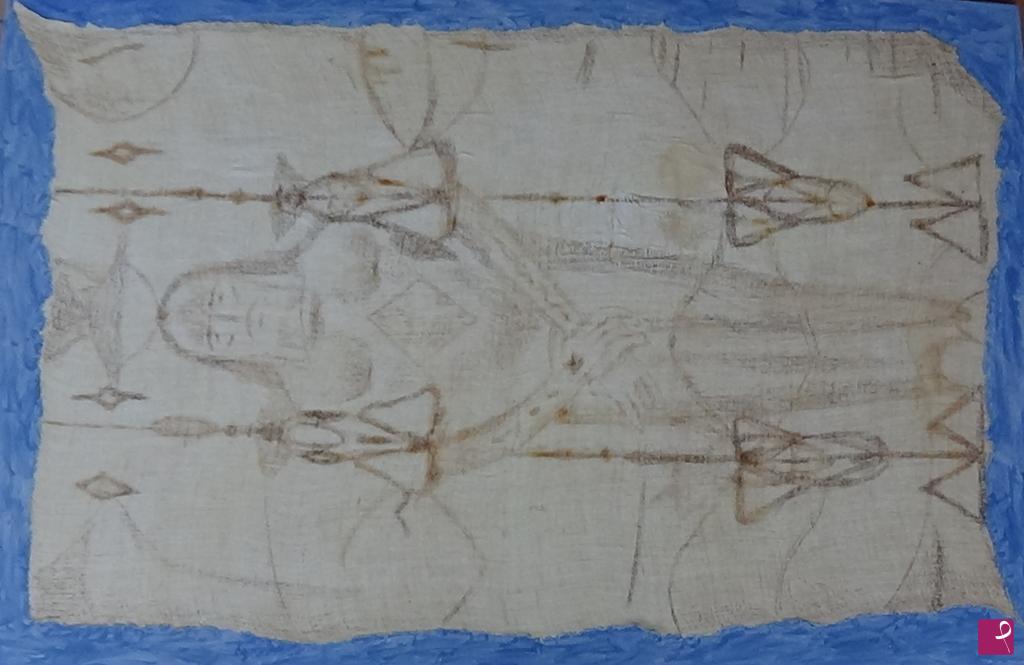ALBY MILANO - LA SINDONE ..
di Alby Milano

Descrizione
La Sacra Sindone ...
Per i fedeli della chiesa di Roma, la sacra sindone rappresenta il telo di lino dove venne avvolto il corpo di Cristo, dopo la sua crocifissione e su cui, per miracolo, sarebbe rimasta impressa l'immagine del figlio di Dio. La sua storia, sia quella documentata che parte dal 1353 sia quella supposta, passa da vicende alterne, come scomuniche, incendi e furti, fino a farla giungere dove è oggi conservata, al Duomo di Torino. Nella sua ultima ostensione, avvenuta nel 2015, due milioni di fedeli si sono radunati per pregare sotto il sudario simbolo del calvario di Gesù.
THE SHROUD ...
Shroud of Turin, also called Holy Shroud, Italian Santa Sindone, a length of linen that for centuries was purported to be the burial garment of Jesus Christ. It has been preserved since 1578 in the royal chapel of the cathedral of San Giovanni Battista in Turin, Italy. Measuring 4.3 metres (14 feet 3 inches) long and 1.1 metres (3 feet 7 inches) wide, it seems to portray two faint brownish images, those of the back and front of a gaunt, sunken-eyed, 5-foot 7-inch man—as if a body had been laid lengthwise along one half of the shroud while the other half had been doubled over the head to cover the whole front of the body from face to feet. The images contain markings that allegedly correspond to the crucifixion wounds of Jesus, including thorn marks on the head, lacerations (as if from flogging) on the back, bruises on the shoulders, and various stains of what is presumed to be blood. The Shroud of Turin is distinct from the Veil of Veronica, which is depicted in the Stations of the Cross as a piece of fabric that was imprinted with Christ’s face during his walk to Golgotha .
The shroud first emerged historically in 1354, when it is recorded in the hands of a famed knight, Geoffroi de Charnay, seigneur de Lirey. In 1389, when it went on exhibition, it was denounced as false by the local bishop of Troyes, who declared it “cunningly painted, the truth being attested by the artist who painted it.” The Avignon antipope Clement VII (reigned 1378–94), although he refrained from expressing his opinion on the shroud’s authenticity, sanctioned its use as an object of devotion provided that it be exhibited as an “image or representation” of the true shroud. Subsequent popes from Julius II on, however, took its authenticity for granted. In 1453 Geoffroi de Charnay’s granddaughter Marguerite gave the shroud to the house of Savoy at Chambéry, and there it was damaged by fire and water in 1532. It was moved to the new Savoyard capital of Turin in 1578. Ever since, it has been publicly exhibited only rarely, as, in recent times, on the marriage of Prince Umberto (1931) and on the 400th anniversary of its arrival in Turin (1978). In 1998 and 2000 Pope John Paul II arranged for public viewings; he called the shroud “a mirror of the Gospel.” Pope Benedict XVI similarly arranged a public display in 2010, and Pope Francis made a pilgrimage to see it in 2015. A replica of the shroud is housed in the Museum of the Shroud in Turin.
Shroud of Turin
Scholarly analyses—attempting to use scientific methods to prove or disprove its authenticity—have been applied to the shroud since the late 19th century. It was early noticed (1898) that the sepia-tone images on the shroud seem to have the character of photographic negatives rather than positives. Beginning in the 1970s, tests were made to determine whether the images were the result of paints (or other pigments), scorches, or other agents; none of the tests proved conclusive. In 1988 the Vatican provided three laboratories in different countries with postage-stamp-sized pieces of the shroud’s linen cloth. Having subjected these samples to carbon-14 dating, all three laboratories concluded that the cloth of the shroud had been made sometime between 1260 and 1390. However, some scientists raised doubts about the researchers’ methodology. Upon receiving the results of the tests, the Vatican encouraged scientists to conduct further investigations of the shroud’s authenticity and recommended that Christians continue to venerate the shroud as an inspiring image of Christ.
0 commenti
registrati o accedi per lasciare un commento















